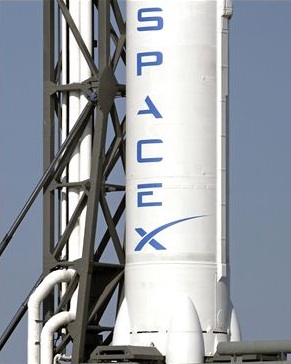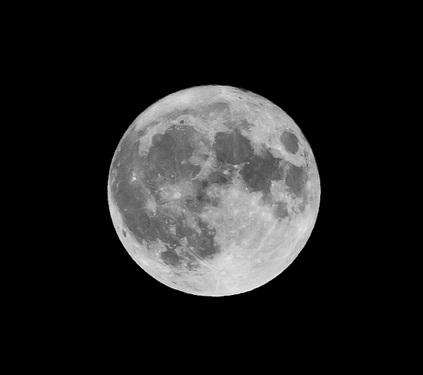SpaceX Dragon Completes Key Tests as it Heads to Space Station
 Thursday, May 24, 2012 at 1:41PM
Thursday, May 24, 2012 at 1:41PM Today, Space Exploration Technologies' (SpaceX) Dragon spacecraft completed key on-orbit tests as part of a historic attempt to be the first commercial company in history to send a spacecraft to the International Space Station.
In the days since SpaceX's Dragon spacecraft successfully launched from Cape Canaveral, Florida, the vehicle has steadily completed one task after another as it prepares to berth with the International Space Station. Only minutes after the spacecraft separated from the Falcon 9 rocket's second stage, its solar arrays successfully deployed, providing power to the spacecraft. The door that had been covering sensors needed for proximity operations opened successfully.
On Tuesday and Wednesday Dragon traveled in orbit, firing its thrusters to catch up to the space station. During that time, the vehicle hit a series of milestones. Dragon showed its Absolute Global Positioning System (GPS) is in good working order. The vehicle demonstrated both a pulsed and a full abort. It also demonstrated free drift, floating freely in orbit as it will when grappled by the space station's robotic arm. And its proximity operations sensors and SpaceX's COTS UHF Communication Unit (CUCU) are up and running.
Early this morning, Dragon's thrusters fired, bringing the vehicle 2.4 kilometers below the International Space Station. The vehicle completed two key tests at that distance. Dragon demonstrated its Relative GPS and established a communications link with the International Space Station using CUCU. Astronauts commanded on Dragon's strobe light to confirm the link worked. A video of Dragon as seen by the space station is available at http://www.nasa.gov/multimedia/videogallery/index.html?media_id=144472261
With these tests complete, Dragon has started the trip flying around the space station, returning the spacecraft to its original approach location.
Dragon has been performing well, but the most difficult aspects of the mission are still ahead.
FRIDAY MORNING - Final Approach, Dragon Grapple
Around 2:00 AM Pacific/5:00 AM Eastern NASA will decide if Dragon is GO to move into the approach ellipsoid 1.4 kilometers around the space station. If Dragon is GO, after approximately one hour Dragon will move to a location 250 meters directly below the station. Dragon will then perform a series of maneuvers to show systems are operating as expected. If NASA is satisfied with the results of these many tests, Dragon will be allowed to perform the final approach to the space station.
Sometime around 6:00 AM Pacific/9:00 AM Eastern, astronauts on the space station will grapple Dragon with the space station's robotic arm and the spacecraft will attach to the station.
SATURDAY MORNING - Hatch Opening
If all goes well, at approximately 2:00 AM Pacific/5:00 AM Eastern, the crew will start procedures to open Dragon's hatch. It will take around 2 hours to complete all operations leading to the hatch opening. Once the hatch is opened, astronauts will enter Dragon for the first time in space.
All dates and times are approximate and could easily change.

 NASA,
NASA,  Space Station,
Space Station,  SpaceX Dragon,
SpaceX Dragon,  launch,
launch,  tests in
tests in  Aviation,
Aviation,  Events,
Events,  Internet,
Internet,  News,
News,  schedule
schedule 


